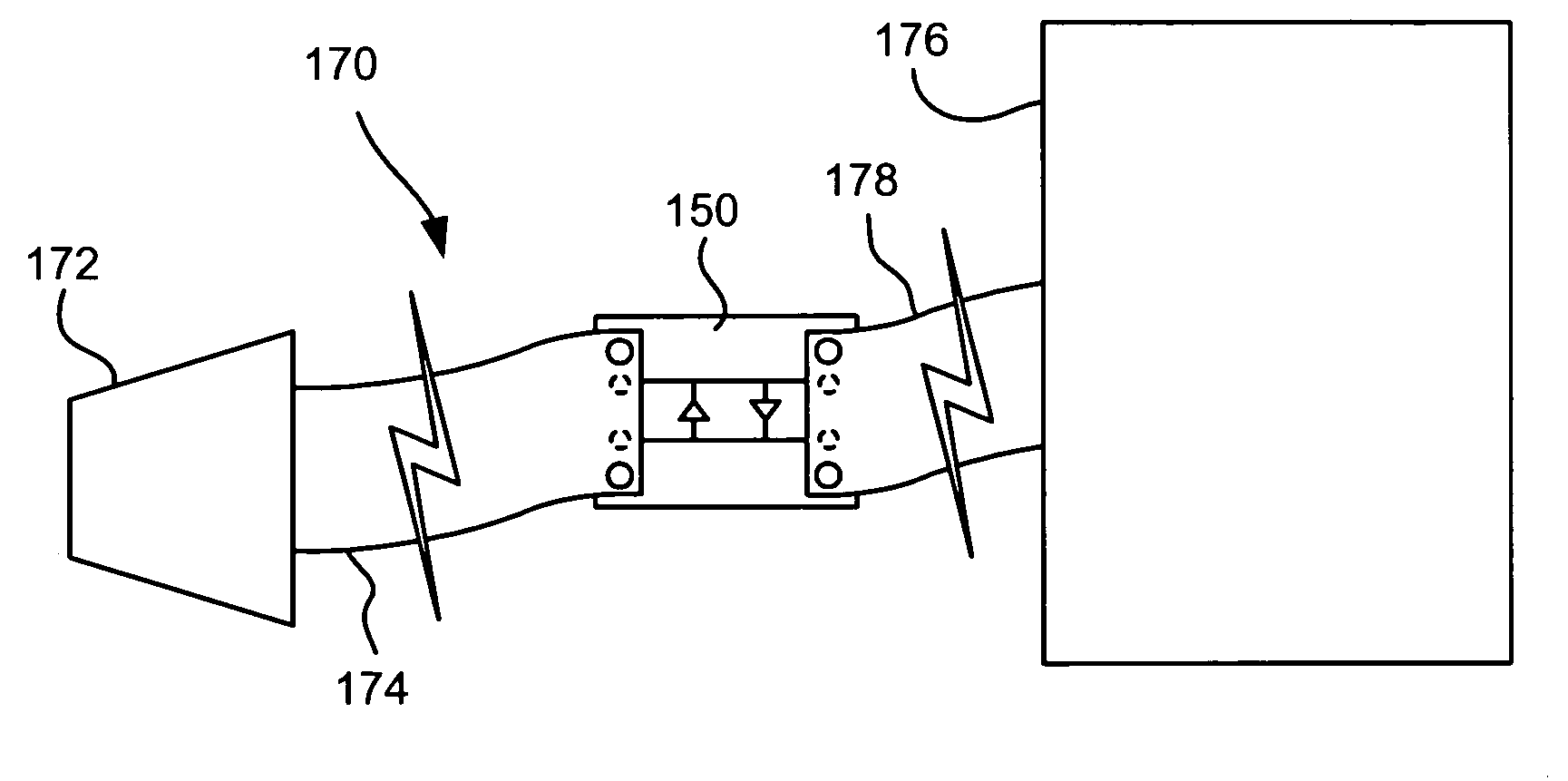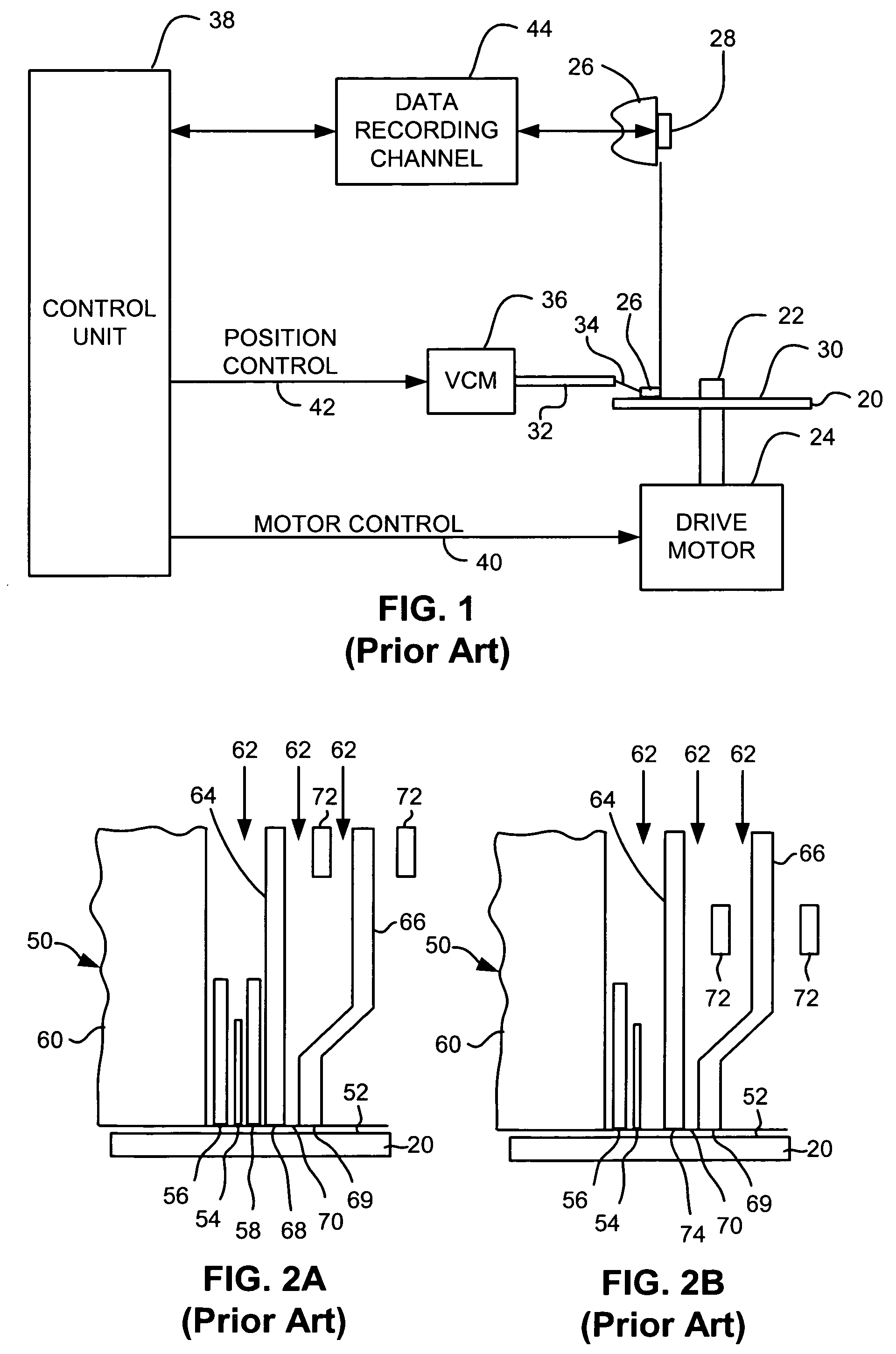Removable ESD protection device using diodes
a protection device and diode technology, applied in the field of reusable devices, can solve the problems of physical damage to the sensors, spurious discharge of static electricity, and buildup of electrostatic charges on the various elements
- Summary
- Abstract
- Description
- Claims
- Application Information
AI Technical Summary
Benefits of technology
Problems solved by technology
Method used
Image
Examples
Embodiment Construction
[0039]The following description is the best embodiment presently contemplated for carrying out the present invention. This description is made for the purpose of illustrating the general principles of the present invention and is not meant to limit the inventive concepts claimed herein.
[0040]For purposes of fabricating and assuring quality of certain types of electronic devices, it is desirable to perform tests at various stages in the manufacturing process. The present description discloses a protective device for protecting delicate components of the electronic device from ESD and EOS damage. More particularly, this invention discloses a removable protective device which can be used during manufacturing and removed when the electronic device is installed in the end device. The protective device can then be reused.
[0041]Although the invention is described as embodied for use with a magnetic tape storage system, the invention also applies to other electronic devices, including magne...
PUM
| Property | Measurement | Unit |
|---|---|---|
| response time | aaaaa | aaaaa |
| height | aaaaa | aaaaa |
| height | aaaaa | aaaaa |
Abstract
Description
Claims
Application Information
 Login to View More
Login to View More - R&D
- Intellectual Property
- Life Sciences
- Materials
- Tech Scout
- Unparalleled Data Quality
- Higher Quality Content
- 60% Fewer Hallucinations
Browse by: Latest US Patents, China's latest patents, Technical Efficacy Thesaurus, Application Domain, Technology Topic, Popular Technical Reports.
© 2025 PatSnap. All rights reserved.Legal|Privacy policy|Modern Slavery Act Transparency Statement|Sitemap|About US| Contact US: help@patsnap.com



